Introduction To Tomato: A Brief Overview
Tomatoes are a popular fruit that’s used in a variety of recipes around the world. While most people think of tomatoes as a vegetable, they’re actually classified as a fruit because they develop from the ovary in the base of the flower and contain seeds. This beautiful fruit, which comes in different colors such as red, yellow, and green, is an excellent source of vitamins and minerals that are essential for good health.
Tomatoes are rich in vitamins A, C, and K, which play a critical role in various bodily functions. They also contain minerals like potassium, calcium, and iron, that help to maintain a healthy body. Additionally, tomatoes are packed with antioxidants and nutrients like lycopene that have been linked to several health benefits.
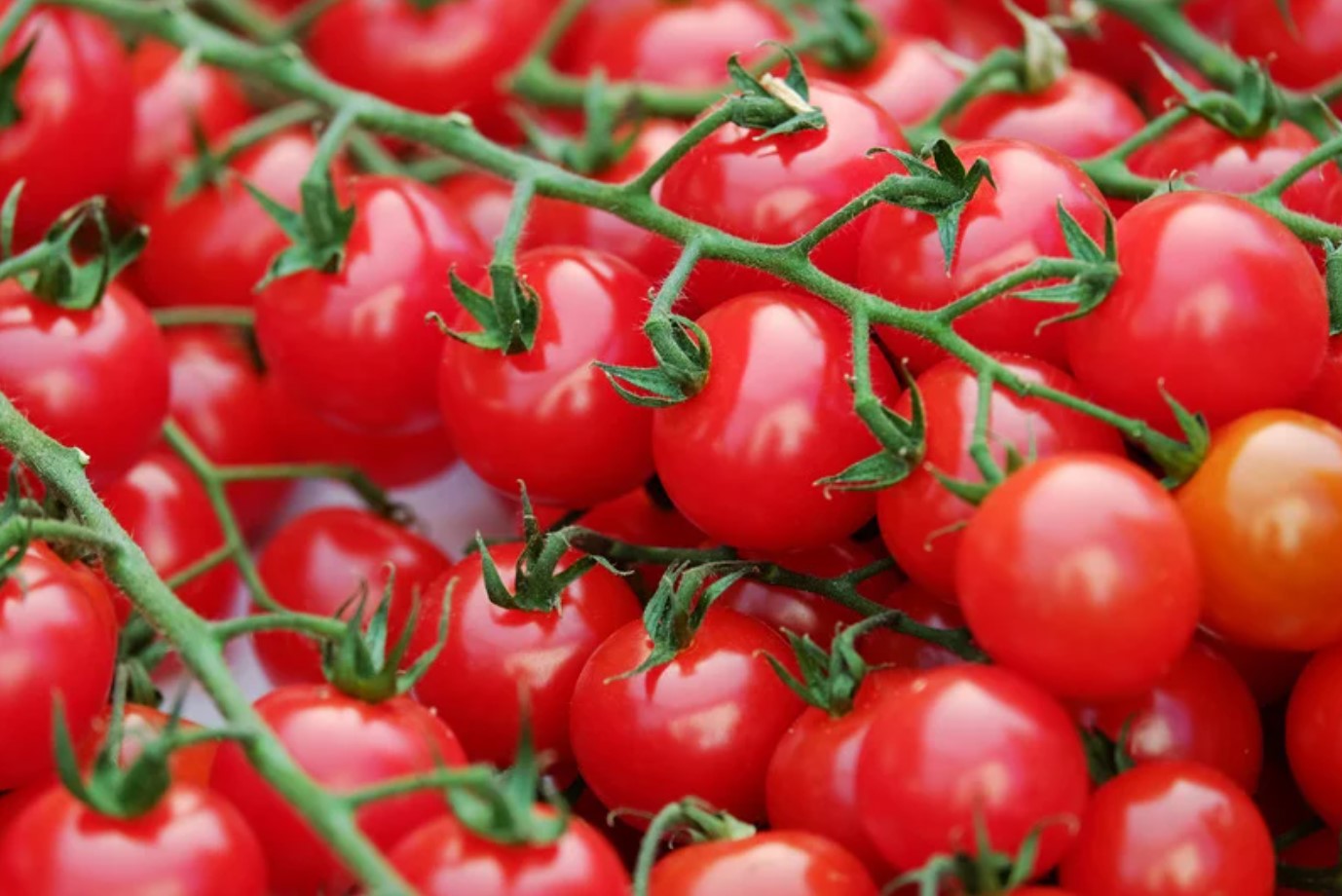
Loved by many, tomatoes are also widely used in the kitchen. They’re a versatile ingredient that is used in salads, soups, stews, sauces, and more. Their juicy, refreshing and slightly acidic flavor is a great addition to many dishes.
- Tomatoes have been enjoyed for centuries and their origins can be traced back to South America where they were consumed by the Aztecs and Incas.
- The tomato plant was first introduced to Europe in the 16th century where it was initially grown as an ornamental plant.
- Tomatoes are now one of the world’s most popular fruits and are grown in almost every country.
Whether you’re a seasoned cook or just starting in the kitchen, integrating tomatoes in your diet can add a burst of flavor and nutrition to your meals. With the different varieties of tomatoes available, you can experiment until you find the perfect one for your recipe. From cherry to beefsteak, tomatoes are a tasty addition to any dish.
In conclusion, tomatoes are a highly nutritious and versatile fruit that have several benefits for your health. They are enjoyed worldwide in cooking and are an essential ingredient in many different types of dishes. Whether you’re eating them raw or cooked, adding tomatoes to your diet can offer several health benefits and add a great taste to your meals.
Understanding The Nutritional Value Of Tomatoes: Vitamins And Minerals
Tomatoes are often viewed as vegetables, but they are actually a fruit because they contain seeds. They are a staple ingredient in many cuisines and come in a variety of sizes and colors.
Tomatoes are not only delicious, but they are also packed with nutrients that are essential for good health. Let’s take a closer look at the nutritional value of tomatoes.
- Vitamin A: Tomatoes are a great source of vitamin A, which plays a crucial role in maintaining healthy eyesight.
- Vitamin C: This vitamin is essential for the growth and repair of tissues in the body. Tomatoes are an excellent source of vitamin C, which helps to boost immunity and protect against infections.
- Potassium: Tomatoes are rich in potassium, a mineral that helps to regulate blood pressure and maintain a healthy heart.
- Folate: This B-vitamin is essential for cell growth and division. Tomatoes are a good source of folate, which is especially important for pregnant women.
In addition to these vitamins and minerals, tomatoes also contain lycopene, an antioxidant that has been shown to protect against certain types of cancer and heart disease. Lycopene is more readily absorbed by the body when the tomatoes are cooked.
| Nutrient | Amount per 100g |
|---|---|
| Vitamin A | 833 IU |
| Vitamin C | 13.7 mg |
| Potassium | 237 mg |
| Folate | 15 mcg |
Tomatoes are a nutritious and versatile food that can be enjoyed in a variety of ways. From fresh salads to hearty sauces, there are countless ways to incorporate tomatoes into your diet. So next time you’re looking for a healthy and tasty ingredient, reach for a ripe tomato!
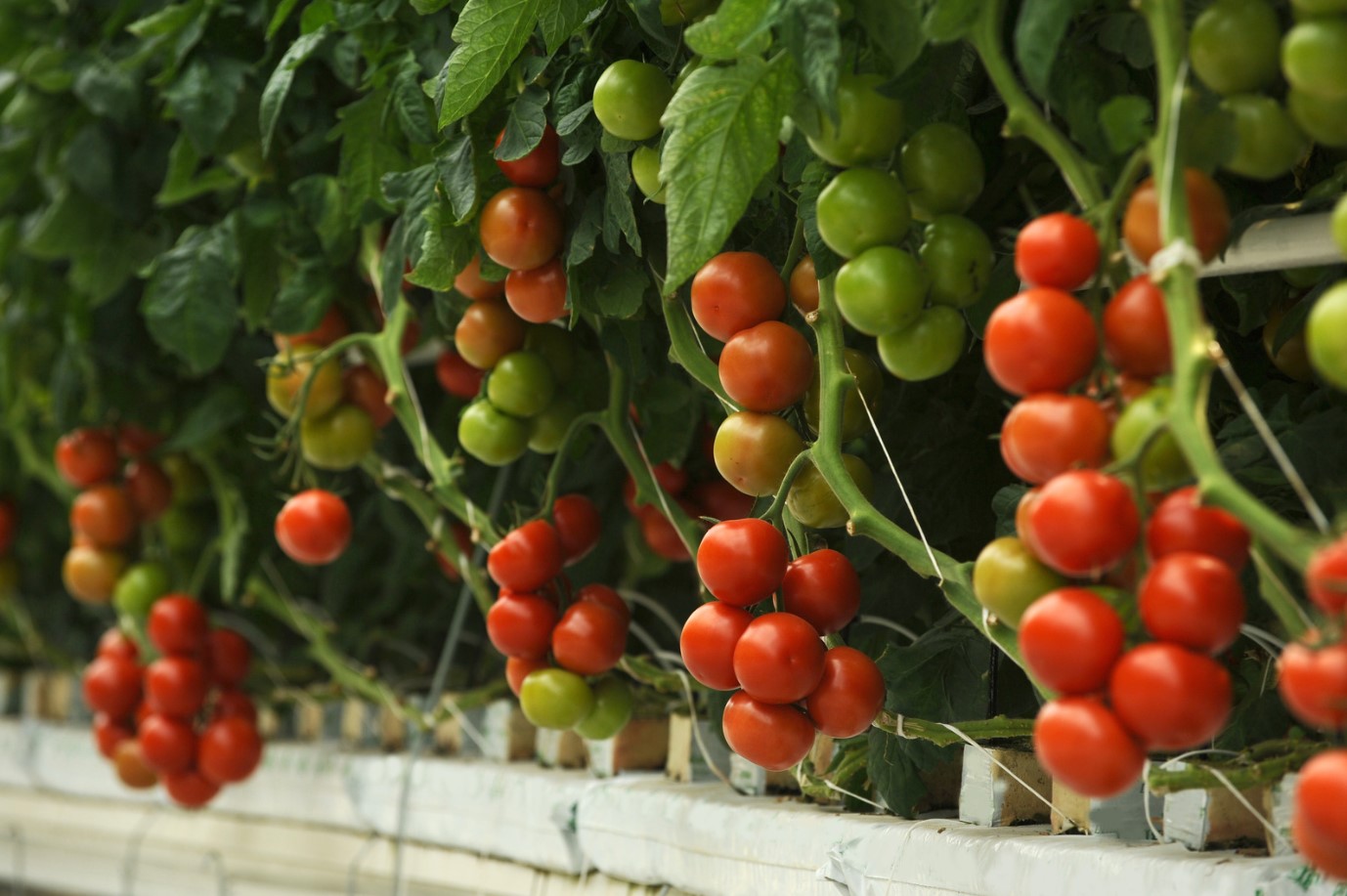
Benefits Of Tomatoes: How İt Helps İn Weight Loss
Tomatoes are not only tasty but also highly nutritious. They contain vitamins, minerals, and antioxidants that are important for overall health. But did you know that tomatoes can also contribute to weight loss? Yes, you read that right! Here are the benefits of tomatoes and how they can help in weight loss.
Firstly, tomatoes are low in calories and high in water content. This means that they can fill you up without adding too many calories to your diet. One medium tomato contains only about 25-30 calories! Adding tomatoes to your meals can make you feel fuller and prevent overeating.
- Secondly, tomatoes are a good source of dietary fiber. Fiber is important for digestive health and can also help with weight loss. Foods that are high in fiber take longer to digest, which means that they can keep you feeling full for longer.
- Tomatoes are also rich in vitamins and minerals. A deficiency in any of these nutrients can lead to a slower metabolism, which can make it difficult to lose weight. Eating a diet that is rich in vitamins and minerals can help to boost your metabolism and promote weight loss.
Another benefit of tomatoes is that they are low in fat and cholesterol. Foods that are high in fat and cholesterol can contribute to weight gain and increase the risk of heart disease. Tomatoes are a great way to add flavor to your meals without adding too much fat or cholesterol.
Finally, tomatoes are a versatile food that can be added to a variety of dishes. From salads to soups, tomatoes can be used in many different ways to add flavor and nutrition to your meals. Experiment with different tomato varieties to find the ones that you like best!
| Vitamins and Minerals Found in Tomatoes | % Daily Value |
|---|---|
| Vitamin C | 28% |
| Vitamin A | 20% |
| Potassium | 8% |
| Vitamin K | 7% |
| Thiamin (Vitamin B1) | 6% |
In conclusion, adding tomatoes to your diet can help you achieve your weight loss goals. They are low in calories, high in fiber, and rich in vitamins and minerals. Tomatoes are also a versatile and tasty food that can be easily incorporated into any meal. So, next time you’re planning your meals, don’t forget about the benefits of tomatoes!
Importance Of Lycopene: A Special Nutrient Found İn Tomato
Tomatoes are one of the most popular vegetables around the world. Although they are commonly used in salads, they are used in many other dishes too. What makes tomatoes even more special is their rich nutrient content which includes lycopene. Lycopene is a carotenoid pigment that is responsible for the vibrant red color of tomatoes. This special nutrient is not just important for the color of the tomato, but it provides many other health benefits too.
Lycopene is a powerful antioxidant that helps to protect cells from damage. It has been found to lower the risk of developing heart disease, stroke, and certain types of cancer including prostate cancer. Moreover, it reduces inflammation, boosts the immune system, and protects against DNA damage caused by oxidative stress.
The human body cannot produce lycopene on its own, which is why it is necessary to include it in the diet. Tomatoes are a great source of lycopene, but the nutrient content can vary depending on the type of tomato and how it is prepared. Cooking tomatoes, such as in tomato sauce or paste can actually increase the amount of lycopene that the body absorbs.
It is important to remember that lycopene is just one of the many nutrients that tomatoes offer. They are also a great source of vitamins C and K, potassium, folate, and fiber. All of these nutrients work together to provide an array of health benefits.
| Nutrient | Amount |
|---|---|
| Vitamin C | 30% of Daily Value |
| Vitamin K | 24% of Daily Value |
| Potassium | 9% of Daily Value |
| Fiber | 2g |
Overall, lycopene is a special nutrient found in tomatoes that is essential for good health. Including tomatoes in your diet is a simple way to reap the many health benefits that they have to offer. So next time you’re in the grocery store, grab some tomatoes and start experimenting with different recipes!
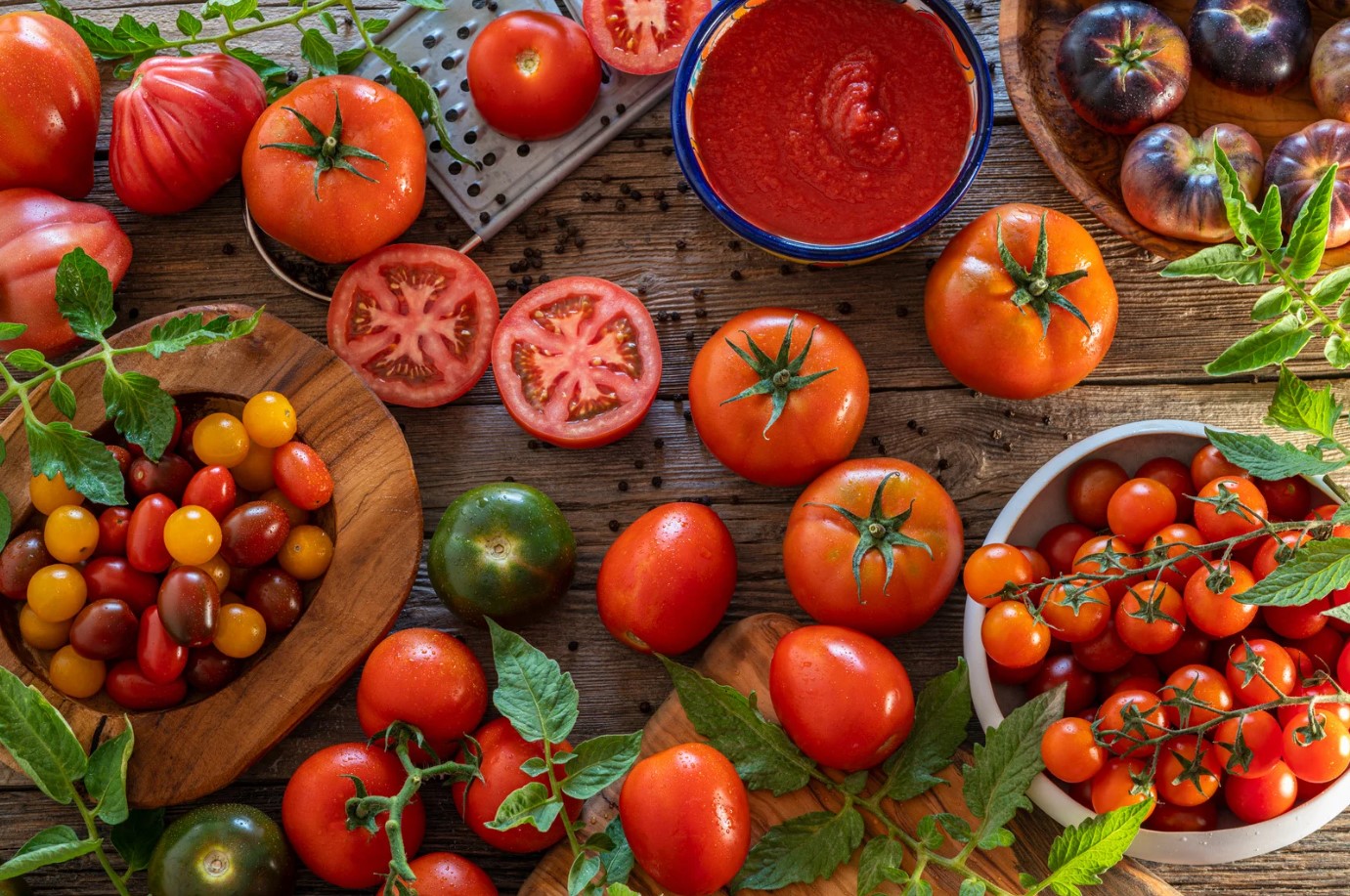
The Role Of Antioxidants İn Tomato: Protecting Your Skin From Damage
Have you ever wondered why tomatoes are so good for your skin? It’s all thanks to the antioxidants present in them! Antioxidants are substances that protect our cells from damage caused by free radicals. Free radicals are unstable molecules that can harm our skin by causing premature aging, sun damage, and even skin cancer. Fortunately, tomatoes are abundant in antioxidants that can help prevent these damages.
Lycopene, a type of antioxidant found in tomatoes, is particularly effective in protecting our skin from damage caused by UV rays. Studies have shown that regular consumption of lycopene can reduce the risk of sunburn and skin cancer. Moreover, it can also improve skin texture and make it more resistant to aging.
- Tomatoes also contain other antioxidants like Vitamin C and beta-carotene. Vitamin C is necessary for the production of collagen, a protein that keeps our skin firm and youthful. Beta-carotene, on the other hand, is known for its moisturizing properties and ability to prevent dryness.
- To maximize the benefits of tomatoes for our skin, it is best to eat them raw or lightly cooked. Cooking at high temperatures can reduce the antioxidant content of tomatoes.
| Antioxidant | Role in skin protection | Sources |
|---|---|---|
| Lycopene | Protects against UV damage and reduces the risk of skin cancer | Tomatoes, watermelon, pink grapefruit |
| Vitamin C | Stimulates collagen production and protects against UV damage | Tomatoes, citrus fruits, strawberries, kiwi |
| Beta-carotene | Prevents dryness and improves skin texture | Tomatoes, carrots, sweet potatoes, spinach |
So, the next time you’re looking for a snack that’s good for your skin, reach for a juicy tomato instead of processed junk food. Not only will it satisfy your hunger, but it will also provide your skin with the antioxidants it needs to stay healthy and radiant!
Tomato And Heart Health: Lowering The Risk Of Heart Disease
Tomatoes are widely known for their bright red color and tangy taste, but what most people don’t realize is that they are packed with numerous health benefits. One such benefit is their ability to lower the risk of heart disease. Heart disease is the leading cause of death globally, and a diet rich in tomatoes can help combat this deadly disease.
One of the reasons that tomatoes are so good for heart health is because they are an excellent source of lycopene. Lycopene is a powerful antioxidant that helps reduce inflammation in the body, thus reducing the risk of cardiovascular disease. Studies have also shown that lycopene can help lower bad cholesterol levels, which is a major risk factor for heart disease.
- Tomatoes have been found to contain various nutrients such as Vitamin C, potassium, and fiber that also contribute to a healthy heart.
- Studies have shown that eating tomatoes on a regular basis can help reduce the risk of stroke by up to 29%.
- Another way that tomatoes help protect the heart is by improving blood flow. Tomatoes contain nitric oxide, which helps to relax the blood vessels and improve blood flow throughout the body.
- Eating tomatoes also reduces oxidative stress, which is a major factor in the development of heart disease.
There are many ways to incorporate tomatoes into your diet to reap these benefits. You can add them to salads, sandwiches, soups, or even make a tomato-based pasta sauce. Simply adding a few slices of tomato to your meals can go a long way in improving your heart health.
- Conclusion: In conclusion, including tomatoes in your diet is a simple and effective way to lower the risk of heart disease. The nutrients and antioxidants found in tomatoes work together to protect the heart and cardiovascular system, making it an important food to add to your daily diet.
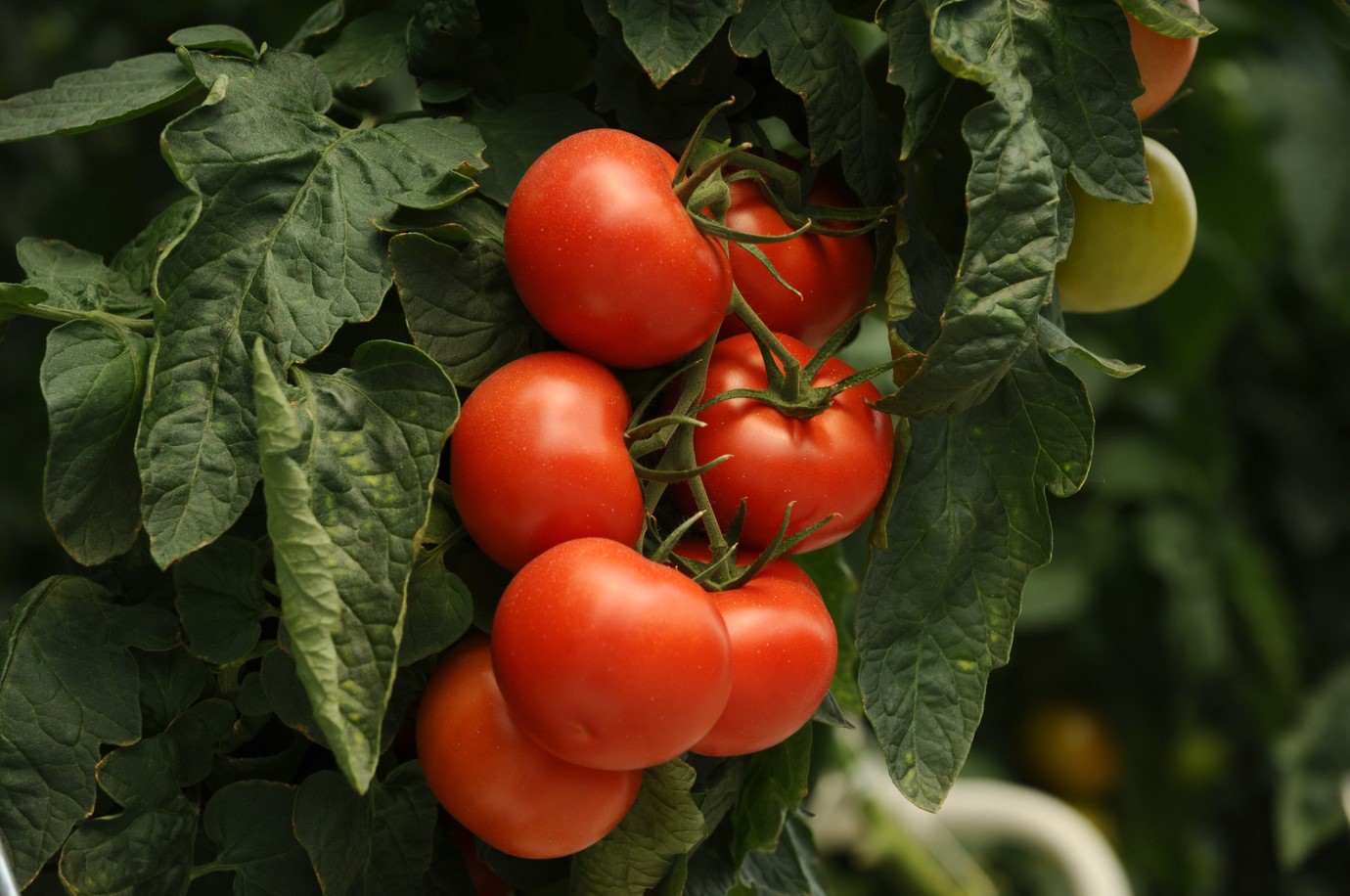
Tomato And Cancer Prevention: The Role Of Lycopene
Among the many benefits of consuming tomatoes, perhaps one of the most significant is their role in cancer prevention. This is largely thanks to a special nutrient found in tomatoes, called lycopene, which has been shown to have anti-cancer properties.
Many scientific studies have been conducted to investigate the relationship between lycopene consumption and cancer risk, and the results have been promising. Research has shown that lycopene can help to prevent the development of several types of cancer, including prostate cancer, breast cancer, lung cancer and more.
- One study, conducted in Italy, found that men who consumed at least 7 servings of tomato products per week had a 60% lower risk of developing prostate cancer.
- Another study, conducted in Japan, showed that women who consumed high amounts of tomato products had a 50% lower risk of developing breast cancer.
- Research has also shown that lycopene can help to suppress the growth of cancer cells by reducing inflammation and oxidative stress.
In addition to its anti-cancer properties, lycopene has also been shown to have other health benefits. It can help to reduce the risk of cardiovascular disease, lower blood pressure and improve skin health.
| Tomato Variety | Lycopene Content (per 100g) |
|---|---|
| Roma | 6.2mg |
| Cherry | 3.6mg |
| Beefsteak | 3.1mg |
So, how can you incorporate tomatoes into your diet to take advantage of their cancer prevention and health benefits? One easy way is to add fresh tomatoes to your salads, sandwiches and wraps. You can also cook with tomato sauce, canned tomatoes, or tomato paste in your meals.
It’s important to note, however, that cooking tomatoes can reduce their lycopene content. To get the most out of your tomatoes, try to consume them raw or lightly cooked. When you do cook them, be sure to use a bit of healthy fat, such as olive oil, to help your body absorb the lycopene.
In conclusion, tomatoes are a delicious and versatile food that can provide many health benefits, including cancer prevention. By incorporating them into your meals, you can improve your overall health and reduce your risk of developing serious diseases.
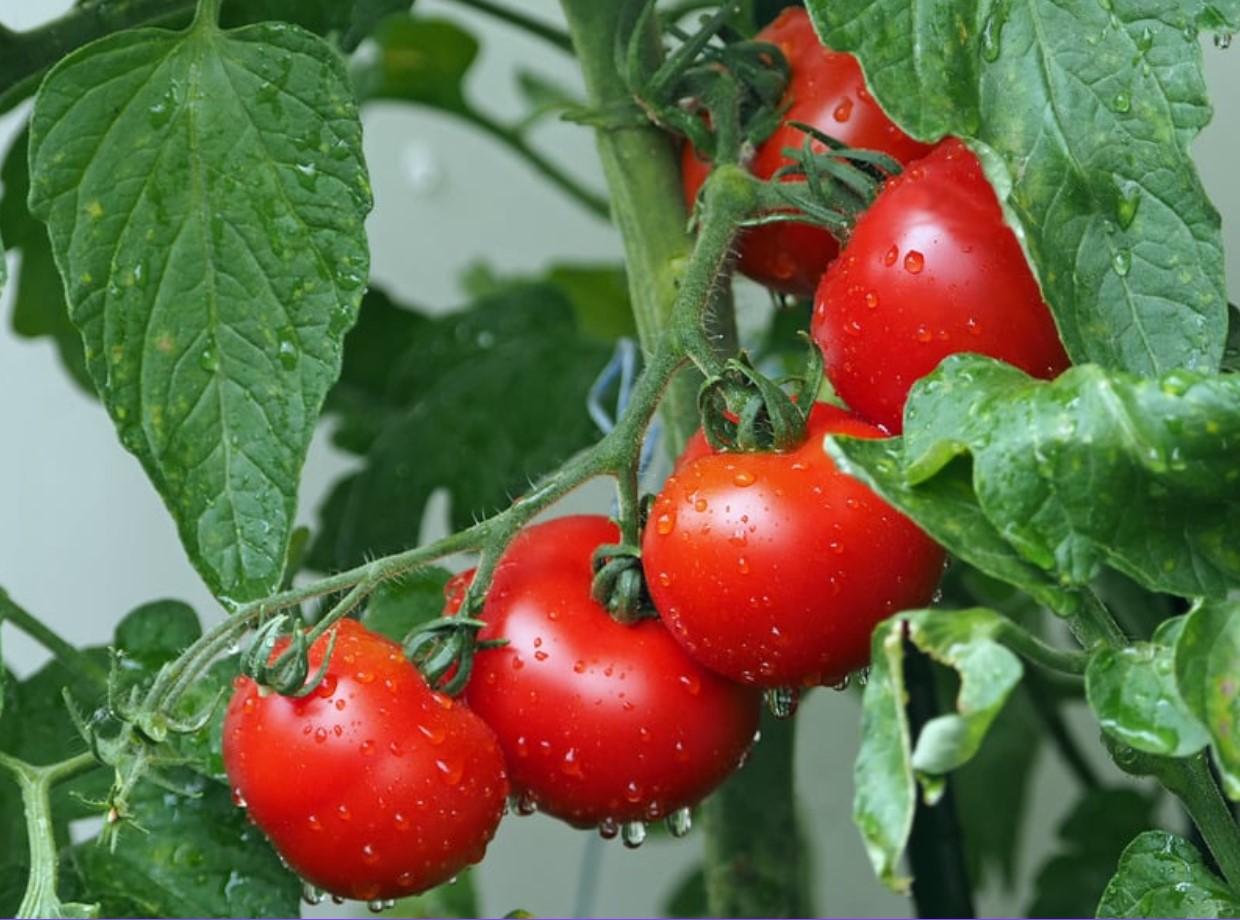
Eating Tomatoes To Prevent Macular Degeneration: How İt Works
Eating tomatoes has been associated with numerous health benefits, including the prevention of macular degeneration. Macular degeneration is a condition that causes the gradual loss of vision, and it affects millions of people worldwide. However, research suggests that incorporating tomatoes into your diet can help reduce your risk of developing this condition.
Tomatoes contain important nutrients that are beneficial for eye health. These nutrients include lycopene, vitamin C, vitamin A, and beta-carotene. Lycopene, in particular, has been shown to protect the eyes from damage caused by oxidative stress, which is a major contributor to the development of macular degeneration.
- One medium-sized tomato contains about 3mg of lycopene
- Lycopene is more easily absorbed by the body when tomatoes are cooked or processed.
In addition to lycopene, tomatoes also contain zeaxanthin and lutein, two powerful antioxidants that are essential for maintaining healthy eyesight. These antioxidants work by absorbing harmful ultraviolet radiation from the sun, protecting your eyes from damage and reducing your risk of developing macular degeneration.
| Vitamin/Mineral | Amount per 100g of Tomato |
|---|---|
| Vitamin C | 13.7mg |
| Vitamin A | 42mcg |
| Beta-carotene | 449mcg |
So how can you incorporate more tomatoes into your diet? It’s easy – simply add them to your favorite dishes! You can slice them up and add them to a sandwich or salad, cook them into a pasta sauce or soup, or roast them with some herbs and spices for a tasty side dish. Cherry tomatoes also make a great snack on their own or paired with some hummus or guacamole.
In conclusion, tomatoes are a delicious and nutritious addition to your diet that can help reduce your risk of developing macular degeneration. So go ahead and enjoy that tomato sauce, salsa, or slice of tomato on your burger – your eyes will thank you!
The Versatility Of Tomatoes: Cooking With Different Tomato Varieties
Tomatoes are a versatile ingredient that can be used in a wide range of dishes. From soups and stews to salads and sandwiches, tomatoes are a must-have ingredient in many kitchens. But did you know that there are different varieties of tomatoes that can be used for different purposes?
One common variety of tomato is the beefsteak tomato. As the name suggests, these tomatoes are large and meaty, with a sweet flavor that makes them perfect for slicing and grilling. Another popular variety is the cherry tomato, which is small and sweet, with a burst of flavor that makes them ideal for salads and appetizers.
- The Roma tomato is another popular variety that is known for its low water content, making it ideal for making sauces and pastes.
- The vine tomato is another popular variety that is ideal for salads and sandwiches, as it is firm and flavorful.
Tomatoes can also be used in a wide range of international dishes. For example, the San Marzano tomato is an Italian variety that is often used in pizza and pasta sauces. The tomatillo is a Mexican variety that is used in salsa verde, while the yellow tomato is a popular ingredient in Mediterranean cuisine.
Regardless of which variety you choose, it’s important to choose tomatoes that are ripe and flavorful. When shopping for tomatoes, look for ones that are firm with a bright, red color. Avoid tomatoes that are soft or mushy, as they may be overripe.
| Variety | Best Used For |
|---|---|
| Beefsteak | Slicing and grilling |
| Cherry | Salads and appetizers |
| Roma | Sauces and pastes |
| Vine | Salads and sandwiches |
| San Marzano | Pizza and pasta sauces |
| Tomatillo | Salsa verde |
| Yellow | Mediterranean cuisine |
In conclusion, tomatoes are a versatile ingredient that can be used in a range of dishes. From the sweet and meaty beefsteak tomato to the small and flavorful cherry tomato, there is a tomato variety for every dish. So go ahead and experiment with different tomato varieties in your cooking, and enjoy the delicious flavors and health benefits that they have to offer.
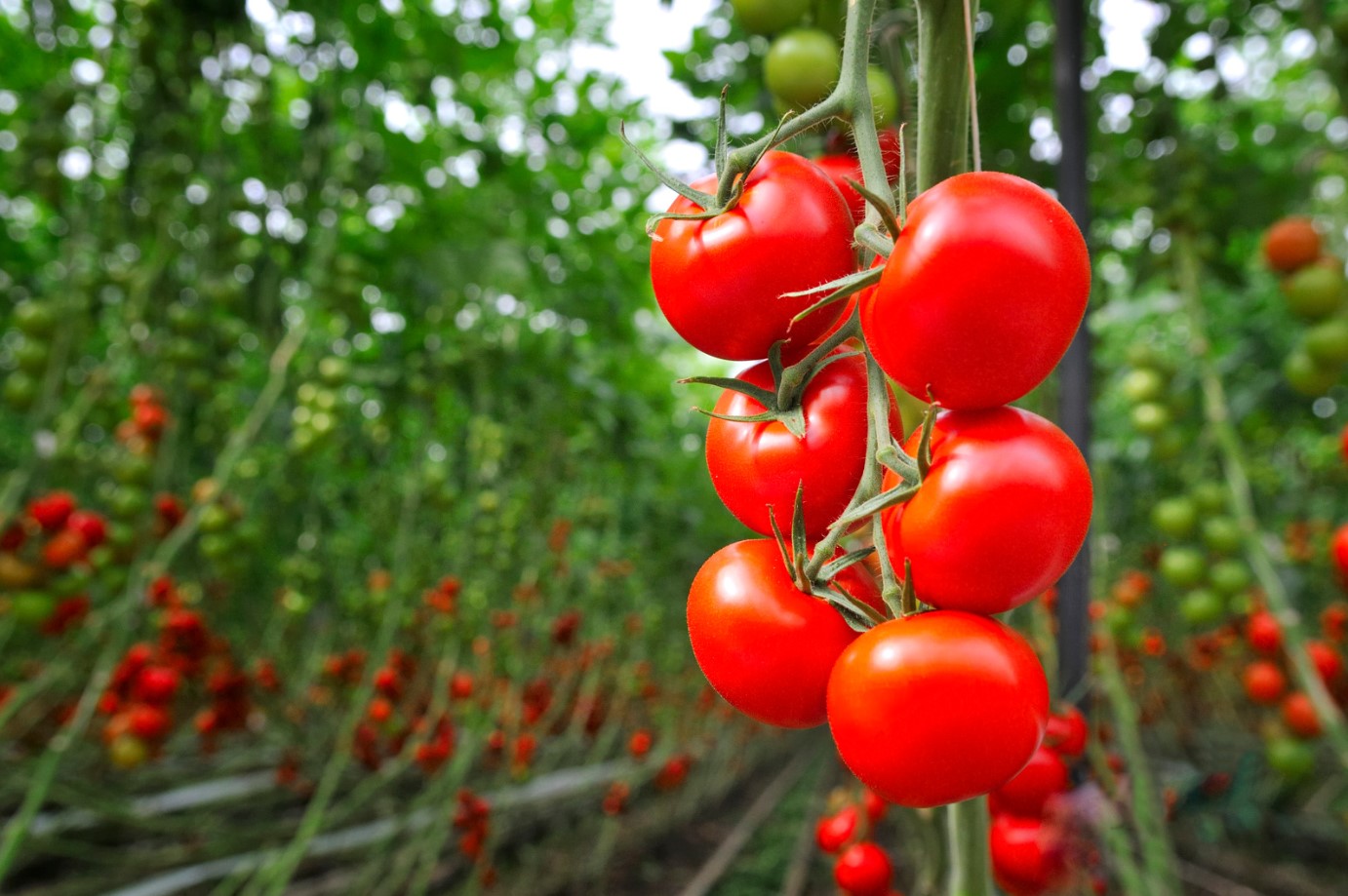
Tomatoes İn Your Diet: How To İncorporate Them İnto Your Meals
Tomatoes are more than just a tasty topping for your pizza or sandwich. They are a versatile fruit, packed with nutrients that provide several health benefits. Incorporating tomatoes into your daily diet is an easy and practical way to improve your overall health. Here are some simple ways to add this nutritious fruit to your meals.
-
- Add tomatoes to your salads
Salads are an excellent way to consume vegetables and fruits. You can add chopped tomatoes to your greens and mix it with other vegetables to make your salad more nutritious. It will also provide a juicy and saucy flavour to your salad.
-
- Cook a flavourful tomato sauce
Tomato sauce is a staple in many households. You can make a homemade tomato sauce by blending fresh tomatoes, garlic, onion, and herbs. It is a versatile sauce that can be used in pasta dishes, pizza, soups, and stews. It is also a great way to add additional fiber and protein to your meals if you include certain legumes in your sauce.
-
- Make tomato soup
If you want to warm up on a cold day, tomato soup is a perfect choice. You can use either fresh or canned tomatoes and add herbs, spices, and cream to make a nutrient-dense and hearty soup. It is also an excellent choice for a healthy lunch that will keep you energized throughout the day.
-
- Add tomatoes as a topping
Tomatoes are a common topping for many fast foods. But, you can also use fresh tomatoes as a topping for your baked potatoes, tostadas, or sandwiches. It adds a tart and sweet flavour to your dishes, which balances well with salty and savoury toppings.
Incorporating tomatoes into your diet is an easy and practical way to improve your overall health. It adds a nutritious and flavourful punch to your daily food routine. So, try these simple ways to add tomatoes to your meals, and see the difference it can make to your health and cooking.
A Brief History Of Tomato: From South America To Your Kitchen
Tomatoes are a popular and versatile fruit that are eaten all over the world. But where did they come from? In fact, tomatoes are native to South America, where they have been grown for thousands of years. The ancient Incas and Aztecs believed that tomatoes had medicinal properties and used them in rituals and ceremonies. However, when the Spanish arrived in the New World in the 16th century, they brought tomatoes back to Europe with them.
At first, Europeans were wary of the tomato. They believed that it was poisonous, and some even thought that eating tomatoes would turn them into werewolves! However, over time, the tomato became more popular. It was used in Italian cuisine as early as the 17th century, and by the 19th century, it had become a staple ingredient in many European dishes.
In the United States, tomatoes were not widely grown until the 1800s. They were originally used as ornamental plants, but eventually, people began to realize their culinary potential. Today, tomatoes are grown all over the world, and there are many different varieties to choose from.
Whether you prefer juicy beefsteak tomatoes, sweet cherry tomatoes, or tangy Roma tomatoes, there is no denying that this fruit has come a long way since its origins in South America. From pizza toppings to salsa recipes, tomatoes have found their way into countless dishes and cuisines around the globe. They are a tasty and nutritious addition to any meal, and their versatile flavor and texture make them a favorite ingredient of chefs and home cooks alike.
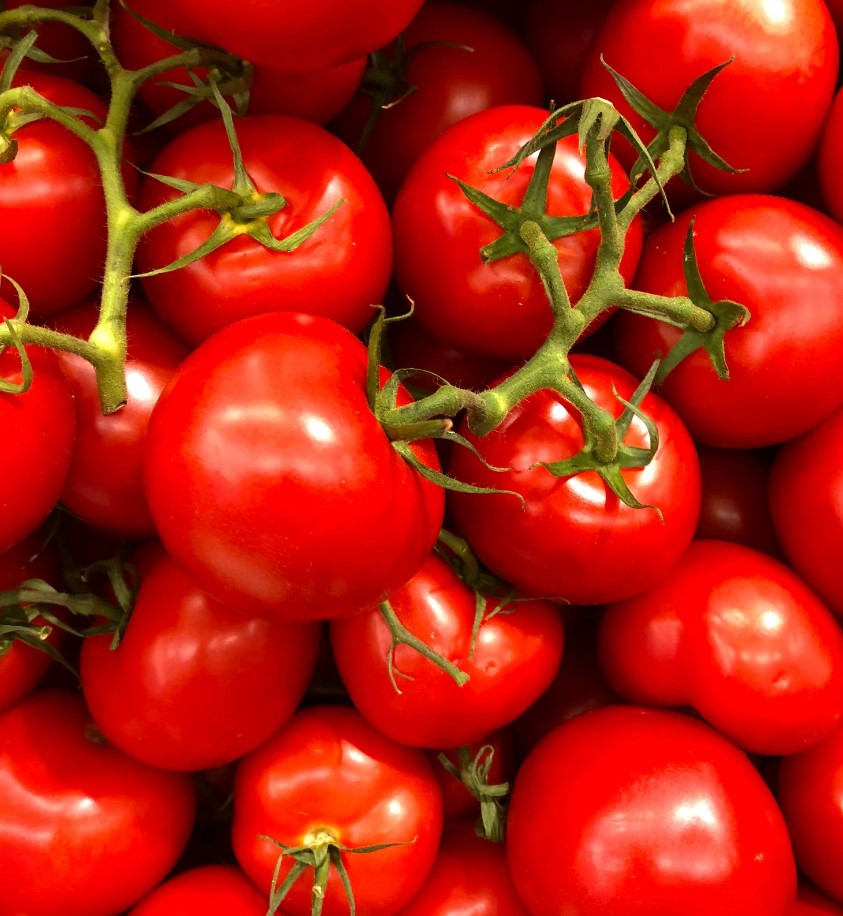
The Tomato İndustry: The Role Of Tomatoes İn Food Business
Tomatoes are a staple ingredient in many cuisines around the world, and they play a crucial role in the food industry. The tomato industry is a significant part of the global food business, with several varieties of tomatoes being consumed in various forms.
The tomato industry produces millions of tons of tomatoes every year, which are used to create various food products such as tomato paste, sauce, soups, ketchup, and salsa. This industry plays a vital role in the world’s economy, as it provides many jobs and contributes to economic growth.
- The Tomato Market:
The tomato market is a competitive and constantly changing industry. Different varieties of tomatoes have different market values, and there is ongoing research to develop new and improved varieties. Additionally, the tomato industry faces various challenges such as climate change, pest and disease control, and government regulations on food production.
The global demand for tomatoes is expected to continue to grow due to its versatility and nutritional properties. Tomatoes are an excellent source of vitamins A, C, and K, and contain important minerals such as potassium, calcium, and iron. Additionally, they are rich in antioxidants and are low in calories, making them an excellent addition to a healthy diet.
- The Future of the Tomato Industry:
The tomato industry is continually evolving with new technological advancements, such as hybridization and genetic modification, which have the potential to improve crop yields and increase resistance to pest and diseases. Additionally, there is ongoing research on the use of sustainable agriculture practices to reduce the environmental impact of tomato cultivation and production.
The tomato industry also has a significant role to play in addressing global food security. Tomatoes are widely consumed, and their production and distribution can be a vital part of ensuring food security in many regions around the world.
| Tomato Varieties | Description |
|---|---|
| Beefsteak | A large, meaty tomato often used in sandwiches and burgers |
| Roma | An oval-shaped tomato used for making tomato paste and sauce |
| Cherry | A small, sweet tomato commonly used as a snack or for salads |
| Grape | A small, oblong-shaped tomato often used in salads and as a snack |
In conclusion, the tomato industry has a significant impact on the food business and the world’s economy, producing various tomato products that are consumed by millions of people worldwide. As the industry continues to evolve, there will be more opportunities for growth and innovation, leading to new and improved tomato varieties, production methods, and food products.
The Future Of Tomato: New Discoveries And Technologies
Tomatoes are one of the most popular fruits in the world, loved for their flavor and versatility. But did you know that there are many new discoveries and technologies in the world of tomatoes? In this blog post, we’ll explore the future of tomato and how it’s evolving to meet the demands of the modern world.
One area where tomatoes are making strides is in the field of genetic engineering. Scientists are learning how to tweak the DNA of tomatoes to enhance their flavor, size, and nutritional value. For example, some tomatoes are being genetically modified to produce higher levels of lycopene, a powerful antioxidant that may help prevent cancer.
Another exciting development in the world of tomatoes is hydroponic farming. In this method, tomatoes are grown in water rather than soil, allowing for increased yields and reduced water usage. This technique is already being used in many parts of the world, and it’s likely to become even more popular in the future.
Finally, the future of tomato is bright thanks to advances in packaging and transportation. New packaging materials like biodegradable plastics and sustainable materials are making it easier to transport tomatoes without damaging them. This means that tomatoes can be shipped further and last longer, reducing waste and increasing availability.
- Genetic engineering is allowing for tomatoes to have higher levels of lycopene.
- Hydroponic farming allows for increased yields and reduces water usage.
- New packaging materials are making it easier to transport tomatoes without damage.
So if you’re a fan of tomatoes, there’s a lot to look forward to in the future. From genetic engineering to hydroponic farming and sustainable packaging, the possibilities are endless. And who knows what other discoveries and technologies will emerge in the years to come?
Tomato Varieties: From Beefsteak To Cherry
When it comes to choosing a tomato variety, the options are endless. From beefsteak to cherry, each type of tomato has its own unique taste and texture.
One of the most popular and well-known varieties is the beefsteak tomato. These large, juicy tomatoes are perfect for sandwiches and burgers. They are also great for roasting and grilling, as they hold up well under heat.
If you’re looking for a smaller, sweeter option, cherry tomatoes might be the way to go. These bite-sized tomatoes are perfect for snacking on or adding to salads. They come in red, yellow, and even green varieties, adding pops of color to your dishes.
- Roma tomatoes are a great choice for making sauces and pastes due to their low water content.
- Heirloom tomatoes come in various shapes and colors, and are known for their vibrant taste and size.
- Grape tomatoes are similar to cherry tomatoes, but are smaller and more oval in shape.
Aside from these, there are also plum tomatoes, campari tomatoes, and many more. Each type of tomato has its own distinct flavor profile and texture, making it easy to find one that suits your taste buds.
| Tomato Variety | Best Uses |
|---|---|
| Beefsteak | Sandwiches, grilling, roasting |
| Cherry | Snacking, salads |
| Roma | Sauces, pastes |
When choosing a tomato variety, it’s important to consider what you’ll be using it for. Some tomatoes are better for slicing, while others are better for cooking. With so many varieties to choose from, the possibilities are endless.
Whether you’re cooking up a storm in the kitchen or simply enjoying a fresh snack, tomatoes are a versatile and delicious option. The next time you’re at the grocery store, consider trying out a new variety of tomato and see how it can elevate your meals.
Fun Facts About Tomatoes: Did You Know?
Tomatoes are not just delicious but also an intriguing fruit that has fascinated scientists and gastronomes for centuries.
Firstly, did you know that tomatoes come in an array of colors including yellow, green, and even purple? Besides the common bright red, these other varieties of tomatoes also have the same characteristic tangy flavor but with a twist.
- Yellow: This type of tomato is less acidic and contains more natural sugars.
- Green: Green Tomatoes have a tangy taste and are great for frying, pickling, and making salsa.
- Purple: This heirloom variety is said to have 50% more antioxidants than the common red tomato
Another surprising fact is that tomatoes are technically classified as a fruit but in culinary terms, it’s mostly referred to as a vegetable.
| Category | Fact |
|---|---|
| Varieties | There are approximately 10,000 varieties of tomatoes |
| Nutrition | Tomatoes are an excellent source of Vitamin C, Potassium, and Fiber. |
| History | Europeans used to believe that tomatoes were poisonous and only regarded them as ornamental plants. |
Tomatoes have a unique history, from being considered poisonous to eventually being recognized as a staple in many cuisines across the world. Whether you like them in a soup, a salad, or a sauce, tomatoes are the ultimate ingredient for a delicious and healthy meal.